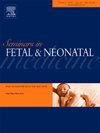新生儿溶血性疾病的健康和社会婴儿死亡率负担。
IF 2.9
3区 医学
Q1 PEDIATRICS
引用次数: 0
摘要
新生儿溶血性疾病曾经是婴儿死亡的常见原因,但现在已经越来越罕见,而且基本上不致命。全球新生儿护理的进步和对新生儿溶血机制的深入了解显著改善了生存结果,特别是在高收入国家。然而,由于不公平的医疗保健机会,区域差距仍然存在。它们对健康造成的长期影响归因于社会和人口因素,这些因素最有可能适用于医疗保健治理。在本综述中,我们将重点关注新生儿溶血性疾病,以i)分析来自全球疾病负担(GBD) 2021报告的数据;ii)研究与溶血性疾病相关的婴儿死亡率(IMR)趋势,包括溶血性疾病的严重并发症——极端高胆红素血症(EHB-IMR);iii)评估GBD超级区域之间的地理空间差异;第四,研究这些趋势与构成“超级区域”的国家的社会人口指数(SDI)的关系。从1991年到2021年,全球ehb相关的死亡率显著下降,从每10万活产73例降至25例。到2021年,EHB和核黄疸仅占所有5岁以下儿童死亡的0.7%。高收入国家大幅减少了溶血性疾病死亡人数,但南亚和撒哈拉以南非洲等地区却没有取得相应的进展。SDI和EHB-IMR之间的负相关关系突出了这些国家差异表现为IMR下降较慢。为了在所有地区实现公平的医疗保健机会,更好地了解社会风险因素将指导重新设计解决方案,这些解决方案还可以通过审计资源利用情况来评估补救性治理政策。本文章由计算机程序翻译,如有差异,请以英文原文为准。
Health and societal infant mortality burden of neonatal hemolytic disorders
Hemolytic disorders in neonates, once exceedingly common causes of infant mortality, have become increasingly rare and now largely non-fatal. Global advancements in neonatal care and deeper understanding of the mechanisms of neonatal hemolysis have significantly improved survival outcomes, particularly among those in high-income countries. However, regional disparities persist due to non-equitable healthcare access. Their long-lasting health consequences have been attributed to social, demographic factors that are most likely amenable to healthcare governance. In this review, we focus our attention to neonatal hemolytic disorders to i) analyze data resourced from the Global Burden of Disease (GBD) 2021 report; ii) study the trends in infant mortality rates (IMR) as related to hemolytic disorders including its severe complication, extreme hyperbilirubinemia (EHB-IMR); iii) evaluate geospatial disparities among GBD super regions; and iv) examine these trends in relation to the socio-demographic index (SDI) of the countries that comprise the “super-regions”. From 1991 to 2021, global EHB-related IMR has declined significantly, from 73 to 25 per 100,000 live births. By 2021, EHB and kernicterus accounted for only 0.7 % of all under-five deaths. High-income countries have dramatically minimized hemolytic disease fatalities, but matched progress eludes regions like South Asia and sub-Saharan Africa. The inverse relationship between SDI and EHB-IMR highlight these national disparities to manifest as slower decline in IMR. In order to achieve equitable healthcare access for all regions, an improved understanding of the societal risk factors would guide re-engineering solutions that are also empowered by audited resource utilization to evaluate remedial governance policies.
求助全文
通过发布文献求助,成功后即可免费获取论文全文。
去求助
来源期刊
CiteScore
6.40
自引率
3.30%
发文量
49
审稿时长
6-12 weeks
期刊介绍:
Seminars in Fetal & Neonatal Medicine (formerly Seminars in Neonatology) is a bi-monthly journal which publishes topic-based issues, including current ''Hot Topics'' on the latest advances in fetal and neonatal medicine. The Journal is of interest to obstetricians and maternal-fetal medicine specialists.
The Journal commissions review-based content covering current clinical opinion on the care and treatment of the pregnant patient and the neonate and draws on the necessary specialist knowledge, including that of the pediatric pulmonologist, the pediatric infectious disease specialist, the surgeon, as well as the general pediatrician and obstetrician.
Each topic-based issue is edited by an authority in their field and contains 8-10 articles.
Seminars in Fetal & Neonatal Medicine provides:
• Coverage of major developments in neonatal care;
• Value to practising neonatologists, consultant and trainee pediatricians, obstetricians, midwives and fetal medicine specialists wishing to extend their knowledge in this field;
• Up-to-date information in an attractive and relevant format.

 求助内容:
求助内容: 应助结果提醒方式:
应助结果提醒方式:


